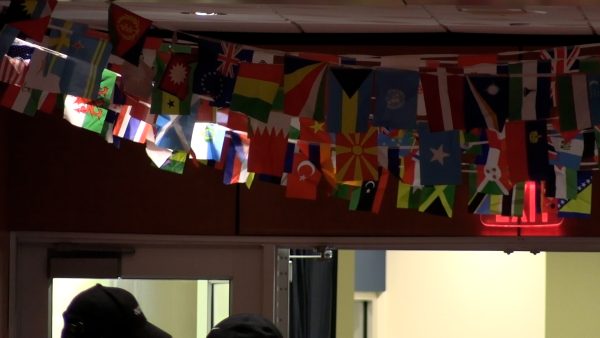Teaching abroad offers cultural lessons
November 6, 2006
It’s 3 a.m., and Ryan’s Bar fades out of sight. Jennifer McManus strolls through the dark roads, making her way toward her temporary home in Killarney, Ireland.
She breaks off from her friends, unafraid of walking alone, despite light’s absence.
In most other places, a young woman walking alone at 3 a.m. may be in danger -ÿbut McManus thinks it’s just fine in Killarney because of the family atmosphere.
McManus, a participant in the Consortium for Overseas Student Teaching Program, said she not only learned regional teaching methods, but she became saturated with the culture, which has played a large role in her teaching.
The COST Program has been placing Kent State student teachers in countries such as Greece, Turkey and South Africa since 1973. It has also worked with Ashland University and Ohio University and continues to work with 27 overseas institutions.
The program has seen an increase in student participation of more than 25 percent this semester.
Gretchen Espinetti, COST coordinator and director of the Office of Clinical Experiences in the College of Education, Health and Human Services, said the increase is most likely because teaching abroad allows students to understand teaching outside of one particular culture. This will help future educators teach in a multi-cultural setting like the United States.
McManus, a secondary education major then, taught at St. Brigid’s Presentation School. Her school’s teaching method, like most other schools in Ireland, was lecture-oriented. Students take traditional classes for the first half of high school then can take a year off before two years of test preparation.
In Ireland, students take a test at the end of their high school careers. The students’ test scores determine their occupations.
The sedate setting allowed McManus to wow the students with creative learning activities. She said the students were fascinated by her “crazy lesson plans.”
One of her classes wrote and illustrated children’s books and later sent the books to Akron elementary schools.
McManus said she had to shape her lesson plans around limited Internet access.
“There was only one other place in town that had Internet, but they charged two Euros (about $2.50) for an hour of Internet,” she said. “I think I’m a better teacher because I had basically nothing to work with.”
Now long-term substitute teaching at Lake Catholic High School in Mentor, McManus often goes to her students’ football games. She said she would like to have everyone feel accepted, like she felt in Ireland.
Student teachers don’t always fall into the community so easily though.
Kenneth Cushner, executive director of International Affairs, said education majors in the program may understand a student who is somewhat different if they are the ones who feel out of place at some point.
“Feeling like they are different when they are in that setting helps teachers get the experience of American diversity,” said Cushner, who headed up COST from 1995 to 2000.
Contact School of Exercise Leisure and Sport reporter Amadeus Smith at [email protected].























